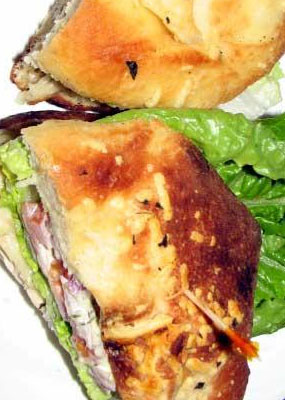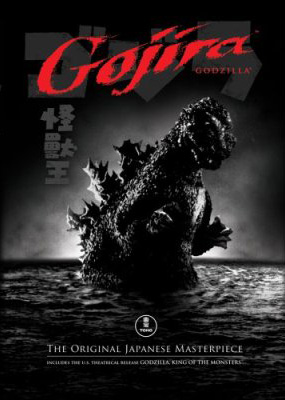After a short flight from icy Newark International Airport to balmy Jacksonville, a car pulled up in front of the pickup area commandeered by none other than Carl Smith, Search and Rescue expert from nGen Works, a legendary web standards design firm in town. I knew immediately, even though this meeting was prearranged weeks in advance, trouble would certainly be found with the nefarious Mr. Smith. After a swift, yet jaunty punch in the face from Carl ("Why, Carl, why?" I muttered through a mixture of tears and blood. Smith chuckled, "Because I love you man..."), my modest OGIO suitcase was heaved into the trunk of his mighty 4-wheeled steed and we high-tailed it to Destination 1: the Hampton Inn on 1331 Prudential Drive.
The welcome I received at the hotel was unexpected as a bevy of small, and highly unpleasant proboscis monkeys (a delicacy in the local restaurants) dressed to the nines in nothing more than Fluevog sneaks and nGen t-shirts, snatched my luggage and proceeded to drag it safely to my accommodations in the penthouse suite. Carl laughed, as this was another prearranged surprise, and he threw two bananas to the apes, who fought over the fruity treats while Carl once again, delivered a powerful punch to my face. "Good to see you, man," he chortled. I teared up again, but wouldn't respond...
Once inside, Carl spoke of my mission: speak on a panel with Klaus Heech - Owner/Art Director of Juicy Temples in Orlando, FL, and Jefferson Rall - founding principal and lead creative at TurnWest Collaborative in Jacksonville. Klaus is a gigantic man with equally gigantic creative skillz and Jefferson is a bit of hometown creative celebrity, signing autographs, kissing babies and alligators at every corner.
But first there was the business of meeting up with two of nGen's ninja-like henchmen (Travis Schmeisser and Joey Marchy) and discussing both the state of the creative union and bands unbeknownst to anyone the pop music world, over several pints of Dos Equis and a delightful shrimp salad feast at a local 5 Points watering hole. We laughed, wept like children and parted ways all threatening to "see each other tomorrow" at the nGen Creative Bunker in the heart of Jacksonville. In true ninja fashion both Travis and Joey disappeared behind a puff of mysterious green smoke and were gone. I had no idea, but could only fear what would come next...
I could hear Carl's car honking and startling the guests at 9:01am on the dot. As I pushed my way through the furious guests that had gathered around his vehicle, I remembered Carl's instructions from the previous night like a terrifying childhood nursery rhyme: "If you're either 1 minute early or 1 minute late," Carl remarked, "you'll get another 'happy punch' - this time in your eye." After Carl finished tying his blindfold tightly around my head googlers, he reminded me that "if I removed it, he would 'kill me'." I shivered, as the car travelled at breakneck speed through the streets of J-Ville, into the dark heart of nGen's Secret Lair. They locked me in the bathroom with my laptop, reminding me that if I complained, they would all make sure I never saw the sunlight again. My fingers tippity-tapped at the keys, sending out several distress emails, which I later found out, were all not only intercepted by the nGen team, but also sent to everyone they knew in Jacksonville with "LOL" in the subject line.
"It's time to go Monkey Boy. Monkey Boy speak now," chortled Carl, as his henchmen (including Bruce Cooke and Varick Rosete) pointed and made hissing ape noises. Again, I was blindfolded and taken (this time at gunpoint) to the River City Brewery for the panel talk to members of The Jacksonville Marketing and Advertising Club. I thought about leaping out of the car on the way to save myself from Smiths' torturous ways only to remind myself of the live alligators that roam the streets of Jacksonville, feasting upon the tourists. I stayed put, now firmly bound with piano wire to Carl's baby seat. The only thing I can remotely recall is Smith's diabolical laughing the entire ride, occasionally drowned out by AC/DC pounding from the car speakers in mono.
The River City Brewery is located downtown, and while the sun was burning brightly in the sky, I found myself fighting to keep my composure during this ride. We arrived and after a brief introduction to Klaus and Jefferson, I was told by Carl to "speak when you are spoken to and I might not pour hot oil on your face." I obliged.
The panel discussion was a delightful experience, with the three of us trading creative blows while Carl ran the show like a Russian ringmaster with trained grizzly bears. The audience asked questions and we responded in turn. In my newly elevated and wily state, I muttered "The Big agency model is dead" (more on that in a future post). Carl's black eyes lit up and the captive audience (Carl had not only locked the doors, but he also had fastened prisoner bracelets to each attendees ankle) gasped. The panel discussion was truly a delight, and when the salad forks stopped being thrown at our heads, I ceased my Carl-induced weeping.
Next, we travelled like a merry band of rogues to Flagler College. On the way we spotted two tourists being devoured by what could only be described a perverse mutated half alligator half wildebeest. We pointed and chuckled like old pals. "It's the way it is around here, Dave," remarked Carl. "And if you keep looking at me, I'll feed you to them next." I turned away and choked back the tears...Again.
Flagler Beach is like combining the attraction of surf culture with the quaintness of an old Mexican town - with Pirates. We met Randy Taylor, one of the instructors at the college who is not only in charge of training today's creative youth at the wily art of client interaction, but he also hangs his hat on a massive ocean cruiser that he calls home.
In a move that could only be described as foolhardy, I left my camera back at the nGen Compound, missing out on capturing much of the beauty that is Flagler. The architecture is quite breathtaking - with Pirates. It also happens to be Jeffersons' alma mater, so we were treated like kings of yore and practically given the keys to the Dean's dressing room. The four of us chatted with captive students (Carl used the same technique on them as he did earlier in the day at The Brewery) and found ourselves fast becoming friends. We feasted on beer, mead and more shrimp at another local watering hole and discovered that we all had many yarns of client successes and nightmares to share. In an astonishing surprise, my fellow dread-pirate pal Mike Rutledge, now schooling the students in the ways of "The Creative Force" at the college, showed up wearing a parrot on his shoulder and grasping a tanqueray and tonic in his hand. We spoke briefly about bars, beers and bears.
Moments later I was safely back at the hotel Hampton, my oasis away from the Flagler oasis with little knowledge of how or why I was here. I've heard of Carl's memory altering tools, but never thought he would use them on me during our feast at Flagler. While the majority of this tale is likely a farcical memory implanted by the diabolical Mr. Smith, I still believe that my work in Jacksonville is not done. Someday soon, I will return -- armed with alligator repellent and a hockey mask to deter the clobbering fists of Carl Smith...
Dave Fletcher is a Founder and Creative Director of theMechanism, a maxi-media firm in New York City and London. He hopes his memory of the event serves him correctly, and promises to write another entry about the Jacksonville trip as soon as Carl Smith's memory altering chemicals wear off.
 It's official. We're now dwellers on a quirky little globe where offbeat and talented graphic designers are gleefully given the keys to the pop-culture kingdom and clench them firmly between their ego and hind quarters. Such is the case with Lemon's recent article and photo expose on graphic designer, Stefan Sagmeister.
It's official. We're now dwellers on a quirky little globe where offbeat and talented graphic designers are gleefully given the keys to the pop-culture kingdom and clench them firmly between their ego and hind quarters. Such is the case with Lemon's recent article and photo expose on graphic designer, Stefan Sagmeister. I am consistently left with my yapper agape by what our fellow professionals and creative types will do to earn some extra "green" at the cost of their hard-built identity. Brands take serious effort to build, and only through time (and with enough money to help get the name out there), will the client see the fruits of their labor pay off with recognition. Personally, I'm the sort of humanoid that is happy to present myself to the world through the best work possible, and would never stoop to the level of off-shooting a company called "theCheapanism" for example, that would hock pre-made web templates or visual solutions for modest prices.
I am consistently left with my yapper agape by what our fellow professionals and creative types will do to earn some extra "green" at the cost of their hard-built identity. Brands take serious effort to build, and only through time (and with enough money to help get the name out there), will the client see the fruits of their labor pay off with recognition. Personally, I'm the sort of humanoid that is happy to present myself to the world through the best work possible, and would never stoop to the level of off-shooting a company called "theCheapanism" for example, that would hock pre-made web templates or visual solutions for modest prices. About 5 years ago, I spoke at the HOW Design Conference in Orlando on the topic of "Good Examples of Bad Design." It was a gratifying experience to be speaking at the same conference that in it's history featured such luminaries as Glaser, Carson and Mok, and from the reaction of the crowd, my endless chattering onstage about lousy design clocking in at somewhere around 50 minutes, was well-received. So, apparently I'm an "expert" at sniffing this kind of stuff out.
About 5 years ago, I spoke at the HOW Design Conference in Orlando on the topic of "Good Examples of Bad Design." It was a gratifying experience to be speaking at the same conference that in it's history featured such luminaries as Glaser, Carson and Mok, and from the reaction of the crowd, my endless chattering onstage about lousy design clocking in at somewhere around 50 minutes, was well-received. So, apparently I'm an "expert" at sniffing this kind of stuff out. When I was a little baby designer, I found solace in a giant radioactive beast named Gojira. While the other schoolyard rats were scurrying around crying about Benji, Luke Skywalker, or god forbid - Bambi, I was weeping uncontrollably that those stupid Japanese scientists would dare murder such a heroic beast with an “oxygen depletion device” — all while he was having a little R&R time underwater between smashing up Tokyo power lines and cardboard huts.
When I was a little baby designer, I found solace in a giant radioactive beast named Gojira. While the other schoolyard rats were scurrying around crying about Benji, Luke Skywalker, or god forbid - Bambi, I was weeping uncontrollably that those stupid Japanese scientists would dare murder such a heroic beast with an “oxygen depletion device” — all while he was having a little R&R time underwater between smashing up Tokyo power lines and cardboard huts.